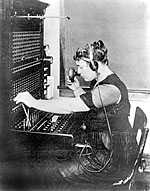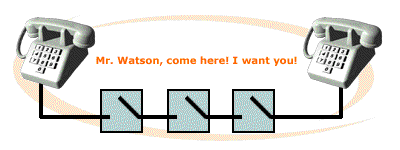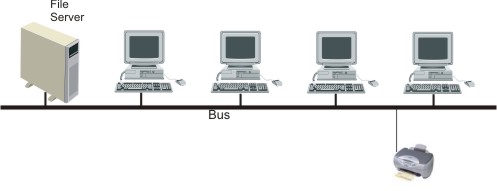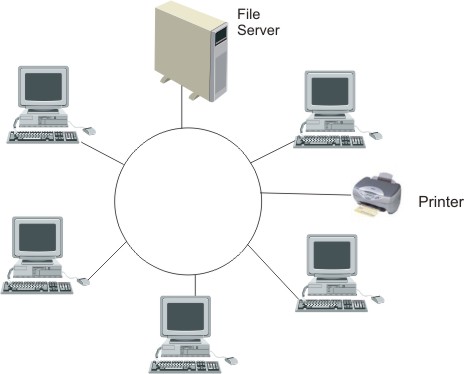| Circuit
switching |
A number of switches are set to create a path along which
data can be sent.
Eg. The old telephone system. Switches are set in the exchanges
between caller and receiver and this path is maintained while the call is
made. Each switch is a possible cause of interference and is unsuitable for
transmitting data.
|
 |
|

|
|
|
|
| Packet
switching |
In a packet-switching
system data messages are split into packets of a fixed
size.
A packet will contain
- the data being sent
- the address
of the source and destination of the data.
- a checksum
for purposes of checking that the data has not been corrupted.
- data which enables the data to be re-assembled
into its original form.
The packet of data is re-directed by each computer
along the network to the next computer until it arrives at its
destination.
A single set of data may be split up into a number
of packets, each of which may take a different route to its destination.
When all the packets have arrived the data is re-assembled.
The Internet is
an example of a packet-switching network.
Advantages :
- not affected by a failed link, as there are a
number of different routes the packets can take.
- good level of security as it is difficult to
intercept a transmission.
|
Routers
read the addresses of the packets and send them along a selected route.
|
|

|
|
|
|
| |
| Bus
network |
A number of computers use a
single channel for sending data. Only one computer can send data at a
time. The packet passes along the network from one computer to the next
until it arrives at the receiving computer.
Collision detecting
- Before a computer can send data down the bus, it
must check to see if the channel is free and wait if it is not.
Once the
data is sent, the computer will check if a collision occurs
(two messages sent at the same time by different stations) and will
re-send if it does. Some protocols specify a
random amount of time to wait
before sending the data again.
|
|
 |
| |
| Token
ring network |
A small packet called a token
passes continuously round the ring network - (always the same way round).
A computer can attach data to a token and the
address of
the computer it wishes to send it to.
Each station retrieves the package and forwards the message on if
necessary. |
|
 |
| |
| Protocol |
A set of rules
for transmitting data across a network.
Computers would not be able to communicate if there
was no protocol as they would not be able to interpret the other's data.
There are a number of standards set down for
protocols. The most commonly used protocol on networks and the Internet is TCP/IP.
|
| |
|
|
| Gateway |
If two different networks
with different protocols need to be connected together a
gateway needs to
be used. The gateway intercepts data passing through and converts it to
the proper format. |
|
|
|